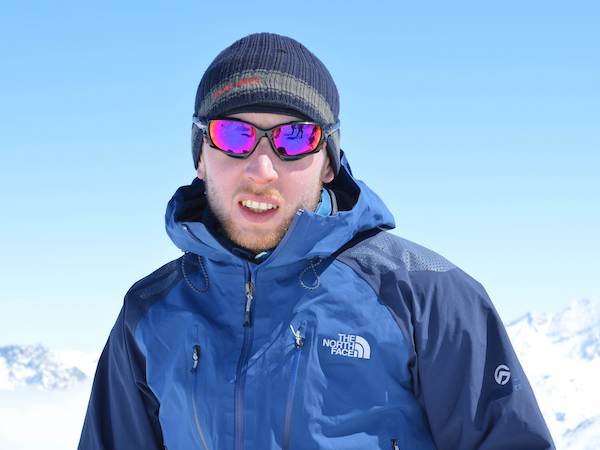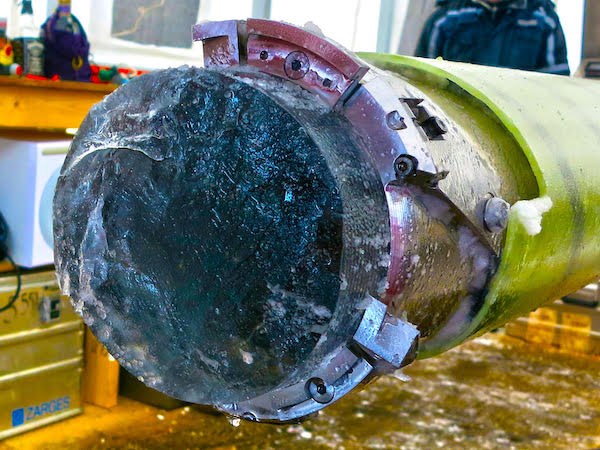Ice cores tell us about hundreds of thousands of years of environmental and climate history of our planet. In Antarctica, European scientists are about to drill the oldest continuous record ever, to date back to 1,5 million years ago. Specialists at Ca’ Foscari University of Venice and at the Institute of Polar Sciences and other few research centres in the world know how to read those history books. However, they know also that new methods and technologies will improve their capability of reading between the lines.
Pascal Bohleber is a German physicist, glaciologist and ice core scientist with a broad interest in the cryosphere. He contributes at the forefront of the scientific challenge of expanding the knowledge on the messages trapped inside the deep ice.
He arrived at Ca' Foscari in 2019 thanks to a Marie Skłodowska-Curie individual fellowship granted for the project Gold-Ice. Recently, he has been awarded a second ‘Marie Curie’, a return ticket to the University of Maine (USA), to work in another state-of-the-art laboratory of Prof. Paul Mayewski. In the meantime, the Ca’ Foscari team led by professors Carlo Barbante and Barbara Stenni contributes to a Marie Curie Innovative Training Networks project, that is looking for 15 talented PhD students who will be trained in state-of-the-art ice-core related climate science with a particular focus on Antarctica. Bohleber will supervise one of those students.
The common thread among those achievements and projects is an analytical, innovative method called ‘laser ablation inductively-coupled plasma mass spectrometry’ or LA-ICP-MS. Why is it so special and promising?
To prepare for future climate change, we need to understand the fundamental dynamics of our climate system. We hope to find an important piece of this puzzle in the deepest and oldest ice layers of Antarctica. However, the deepest layers are inevitably highly thinned, thus calling for ice core analysis at an unprecedented level of detail. LA-ICP-MS is a high-resolution, micro-destructive technique, with only a few tenths of microlitre of ice ablated from the surface by the laser. The ablated sample is transported by an inert carrier gas to the mass spectrometer, where it is analysed for various elemental impurities. My first Marie Curie project GOLD-ICE demonstrated how the application of LA-ICP-MS for imaging the 2D impurity distribution in ice cores can be refined and strongly improved.
How did you choose to study in this field? What were your first steps?
Ever since I was a student at Heidelberg University the interdisciplinary nexus of ice core science has fascinated me, especially the study of deep layers with highly thinned layers. Soon after finishing my PhD in Physics from Heidelberg University in 2011, I obtained my first postdoctoral scholarship to visit the group of professor Paul Mayewski at the University of Maine, USA. I was intrigued by the potential of laser ablation inductively-coupled plasma mass spectrometry. At that time, Mayewski hosted one of just two world-wide existing LA-ICP-MS systems for ice core analysis. That fellowship gave me the opportunity to work on an Alpine ice core focusing on deciphering highly thinned annual layers. After my return from the USA I continued to investigate the deepest and oldest ice layers in the Alps at the Austrian Academy of Sciences.
What inspired you to write a project and choose Ca’ Foscari as host institution?
I was looking for a new opportunity to realize some of my new research ideas around LA-ICP-MS, and the chance to pursue applications also to polar ice cores. Through a fortunate coincidence, I met professor Carlo Barbante at a conference in Paris in 2017. He shared the fascination for the potential of LA-ICP-MS, especially because of his leading role in the “Beyond EPICA: Oldest Ice Core” project. The synergy created between Ca’ Foscari and the Institute of Polar Sciences of the CNR constitutes an important asset for the research in polar regions, making Venice the “pole” of polar research in Italy. Since Barbante was already on his way to set up a LA-ICP-MS system at Ca’ Foscari, our interests were a perfect match. He encouraged me to apply for a Marie Curie European fellowship so that we could work together in Venice. Thanks to the invaluable assistance of the research office I was able to obtain this fellowship in 2018 and start my project GOLD-ICE in Venice in January 2019.











